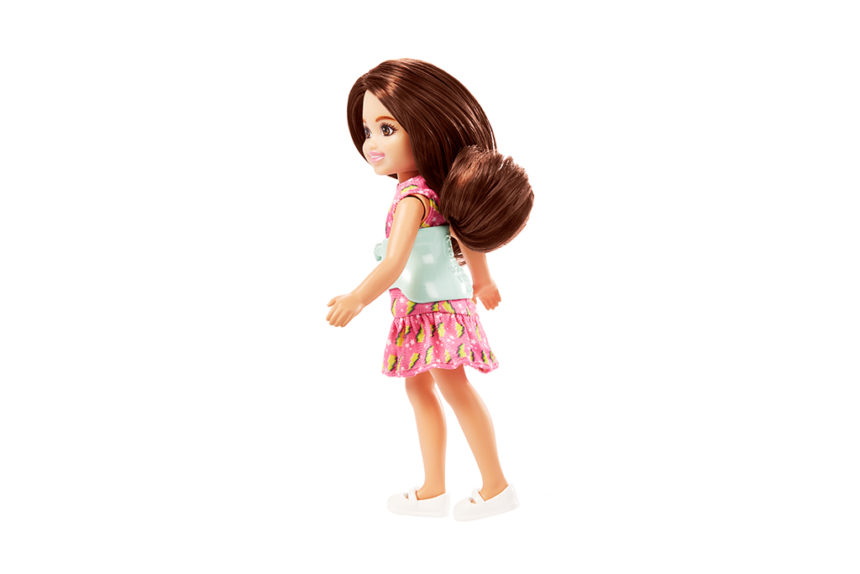The iconic Barbie brand has made several strides in recent years to improve the diversity of its dolls, whether it’s expanding its Barbies with different skin colors, body sizes or disabilities.
Now, Mattel is rolling out its first Chelsea doll with scoliosis, a curvature of the spine that’s often first diagnosed in children.
Barbie collaborated with a medical expert, neurosurgeon Dr. Luke Macyszyn, to develop the Chelsea doll with scoliosis. The goal was to design a doll that children with spinal issues — whether a simple case of scoliosis or other more serious disorders — could relate to. The Chelsea doll also features a removable back brace.
“I was honored to work with Barbie on the development of the Chelsea with scoliosis doll and ensure the accuracy of her shape and spinal alignment,” Macyszyn, who is a professor of neurosurgery at UCLA, said in a statement. “This doll is an amazing example of representation for young children and adolescents who have been diagnosed with scoliosis or wearing a back brace, and I look forward to seeing it on shelves.”
Scoliosis affects some 2 to 3% of the U.S. population, or about six to nine million people, according to Columbia University Irving Medical Center. The most common form, adolescent idiopathic scoliosis, typically appears in children between the ages of 10 and 15, and can be treated with physical therapy and occasionally a brace.
The Chelsea doll is Barbie’s younger sister and was originally launched in 2011. At age seven, she’s meant to be the youngest sister of the Barbie family and was designed specifically for younger children. The Chelsea doll line also includes a doll in a wheelchair.
“We believe in the power of representation and are committed to creating dolls in a variety of looks so that kids can see themselves in Barbie,” Lisa McKnight, EVP and global head of Barbie and Dolls at Mattel, said in a statement. “Our Chelsea line provides infinitely more ways to spark storytelling, all while providing kids with a way to develop their empathy and social processing skills through doll play.”
The Chelsea doll with scoliosis is the most recent example of Barbie’s ongoing commitment to offering diverse products to its consumers.
In 2022, Barbie unveiled a new doll with hearing aids, which received support from medical experts and disability advocates.“When you have a popular doll like Barbie, who’s an icon as far as dolls go, wearing bright pink hearing aids — it not only gives children the opportunity to see somebody just like them, but it also gives adults that affirmation,” Barbara Kelley, executive director of the Hearing Loss Association of America, told MM+M at that time.








